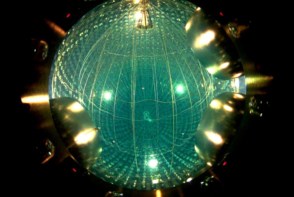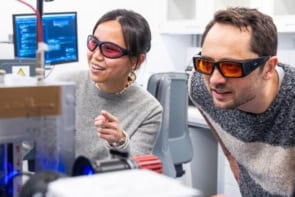Scientists have always wanted to see how individual atoms and molecules behave during various reactions. But these processes occur so fast that they can only be probed by ultra-short bursts of radiation, which are tricky to generate at some wavelengths. Now a simple X-ray switch developed by Matthew DeCamp of the University of Michigan and colleagues could make it much easier track the dynamics of atoms and molecules as reactions proceed (M DeCamp et al 2001 Nature 413 825).
X-rays have long been used to study the structure of matter, but some reactions take place in just a few picoseconds – that is, 10-12 seconds. Pulses of x-rays just femtoseconds long – 10-15 seconds – are needed to probe such reactions as they proceed.
Synchrotrons produce trains of such pulses, but physicists need to be able to tailor the pulse trains to their own experiments. The simple device developed by DeCamp’s team – which is based on a crystal of germanium – allows scientists to do this by switching the pulses on and off as required.
The X-ray beam from the synchrotron passes through the crystal, and at a certain angle of incidence, it splits into two as it leaves the crystal. The intensities of these beams depend on the exact structure of the crystal lattice, and DeCamp and co-workers realised that they could distort the crystal to change the relative intensities.
To do this, they fired ultrashort laser pulses at the crystal to briefly displace the atoms in the crystal lattice. When the laser was at a certain angle, the team found that the distorted lattice channels nearly all of the energy from the original X-ray beam into just one of the output beams. This momentarily creates a very intense coherent beam and a very dim beam – so the crystal behaves as a switch.
Although the X-ray pulses created by DeCamp and colleagues are currently too long to probe fast chemical reactions, the researchers claim they can produce femtosecond pulses by using shorter laser pulses to distort the crystal. But they admit that the technique will ultimately be limited by how fast the atoms in the crystal move in response to the laser pulses.



